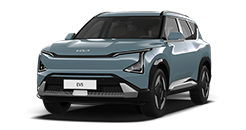open menu
- Home>
- Discover Kia>
- ASK>
- Are electric car chargers universal?
Are electric car chargers universal?
“Though all EVs use the same standard plugs for Level 1 and Level 2 charging, standards for the DC charging may vary among manufacturers and regions.”
EV charging can be categorized into three different levels. These levels represent the power outputs, therefore charging speed, accessible to charge an electric car. Each level has designated connector types that are designed for either low or high power use, and for managing AC or DC charging. Different levels of charging for your electric car reflect the speed and voltage at which you charge your vehicle. In short, it is the same standard plugs for Level 1 and Level 2 charging and will have applicable adapters, but individual plugs are needed for DC fast charging based on different brands.
Level 1 Charging (120-volt AC)
Level 1 chargers use a 120-volt AC plug and can be simply plugged into a standard electrical outlet. It can be done with a Level 1 EVSE cable which has a standard three-prong household plug on one end for the outlet and a standard J1722 connector for the vehicle. When hooked up to a 120V AC plug, charging rates cover between 1.4kW to 3kW and may take up anywhere from 8 to 12 hours depending on battery capacity and state.
Level 2 Charging (240-volt AC)
Level 2 charging is mainly referred to as public charging. Unless you have a Level 2 charging equipment setup at home, most Level 2 chargers are found in residential areas, public parking lots, and places of work and commercial settings. Level 2 chargers require installation and offer charging through 240V AC plugs. Charging generally takes up from 1 to 11 hours (depending on battery capacity) with a charging rate of 7kW to 22kW with a Type 2 connector. For example, the KIA e-Niro, equipped with a 64kW battery, has an estimated charging time of 9 hours through a 7.2kW onboard Type 2 charger.
DC Fast Charging (Level 3 Charging)
Level 3 charging is the fastest way to charge an electric vehicle. Though may not be common as Level 2 chargers, Level 3 chargers can also be found in any major densely populated locations. Unlike Level 2 charging, some EVs may not be compatible with Level 3 charging. Level 3 chargers also require installation and offer charging through 480V AC or DC plugs. Charging time can take up from 20 minutes to 1 hour with a charging rate of 43kW to 100+kW with a CHAdeMO or CCS connector. Both Level 2 and 3 chargers have connectors tethered onto the charging stations.
As it is with every device that needs charging, your car batteries will decrease in efficiency with every charge. With proper care, car batteries can last for more than five years! However, if you use your car daily under average conditions, it would be good to replace it after three years. Beyond this point, most car batteries won’t be as reliable and could lead to a number of safety issues.
Types of electric car plug
Two types of plugs for AC (alternating current) charging
Type 1 plug
The type 1 plug is a single-phase standard plug for electric cars from America and Asia. It allows you to charge your car at a charging power level up to 7.4 kW.
Type 2 plug
Type 2 plug is a triple-phase plug and considered to be the standard model. With three additional wires to let current run through, it simply runs your vehicle faster. In private spaces, charging power levels of up to 22 kW are common, while charging power levels of up to 43 kW can be used at public charging stations. Most public charging stations are equipped with a type 2 socket. All mode 3 charging cables can be used with this, and electric cars can be charged with both type 1 and type 2 plugs.
two types of plugs for DC (direct current) charging
Type 2 Combo (Combined Charging System, or CCS)
CCS plug is a five-pin plug, which is an enhanced version of the Type 2 plug, with two additional power contacts for the fast charging, and allows AC and DC charging power levels of up to 170 kW. In practice, the value is usually around 50 kW.
CHAdeMO Plug
The CHAdeMO plug is a 10-pin plug that is used in fast-charging stations. They are called Level 3 chargers that are capable of supplying up to 50 kW of power with a current that can reach 125A. This quick charging system allows for charging capacities up to 50 kW at the appropriate public charging stations.
Mode 2 charging cable
Mode 2 charging cables are generally for domestic socket connection and are supplied by manufacturers, and come in various versions depending on the region. Called ICCB In-Cable Control Box, a box is installed to allow communication between the connector plug and vehicle plug.
Mode 3 charging cable
Mode 3 charging cables also vary by region but connect the charging station directly to your electric vehicle. Charging stations are generally equipped with type 2 sockets in order to allow cars to be charged through using both Type 1 and Type 2 plugs. Depending on regions and manufacturers, a mode 3 charging cable from type 2 to type 2 or a mode 3 charging cable from type 2 to type 1 is required.














